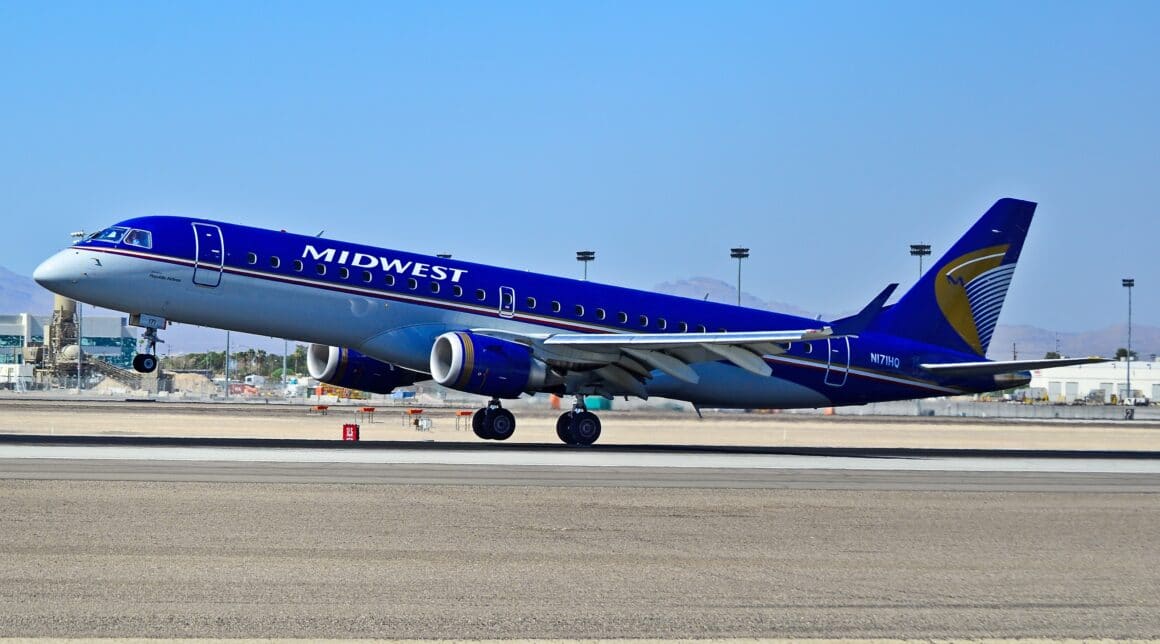Midwest Express was a unique niche airline that couldn’t adapt to market changes
Throughout the history of powered commercial flight, many airlines have come and gone. Some were akin to bananas, others could not move beyond accidents, and others were just…kinky. Midwest Airlines Express was none of these; it was an honest, hard-working airline based out of the Midwest with humble beginnings and tragedy along the way.
But, ultimately, the airline was swallowed up by a bigger fish. So let’s find out a little bit more about this ancient airline.

The Early Years
Midwest was was born in Neenah, Wisconsin, on the shores of Lake Winnebago, as the aviation subsidiary of the Kimberly-Clark Corporation. Yes, that Kimberly-Clark, as in Kleenex tissues and Kotex feminine products.
The airline first came into existence as a corporate aviation entity to transit K-C corporate suits and engineers between their Neenah headquarters and their paper mills across the nation.
They operated a fleet of small corporate aircraft out of Appleton’s Outagamie County Regional Airport (KATW- now Appleton International Airport). Eventually, their operation expanded from their in-house mission beginning in 1948 to an executive aircraft maintenance service known simply as K-C Aviation.
From here, K-C Aviation split off into separate entities, but the pure maintenance side of the company separated in 1969 and was finally bought out by Gulfstream in 1998 for $250 million.
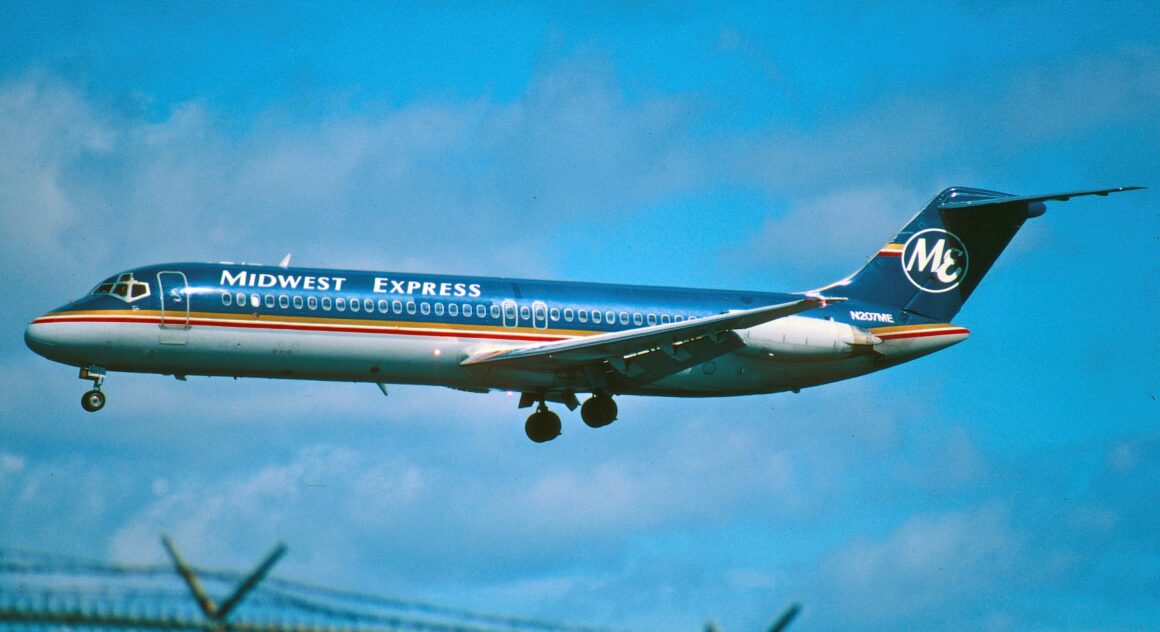
The Era of Deregulation
The infamous Airline Deregulation Act passed in 1978, and it radically altered how commercial air carriers operated. The changes were sweeping and took apart huge portions of red tape that kept a cap on how many airlines could use, get routes, etc. In effect, there was only closed competition in the airline industry.
The passing of the regulation was monumental because it cut out the red tape that has defined the industry for decades. The deregulation act put the power back into the free market and allowed open competition for routes and airports. A slew of new airlines came on the scene in the aftermath, some of which still exist.
Kimberly-Clark decided to expand on its successful experience as a maintenance and charter jet firm by creating an organic scheduled air carrier, Midwest Airlines with service hubbed at Milwaukee and later a smaller hub presence at Kansas City.

Formation of a New Airline
Although some people recognized Midwest Express as a regional carrier, it’s more accurate to describe them as a national carrier that just happened to have a small fleet. While President Jimmy Carter approved the deregulation act in 1978, Midwest Express did not go wheels up until 1984, with a spartan fleet of two DC-9s and under 100 employees.
The original route structure was simple and mimicked their service locations from their years as a charter airline, opening up to Chicago and Atlanta out of Appleton. However, the growth pattern for Midwest Express was anything but meteoric, growing to 24 airplanes by 1996.
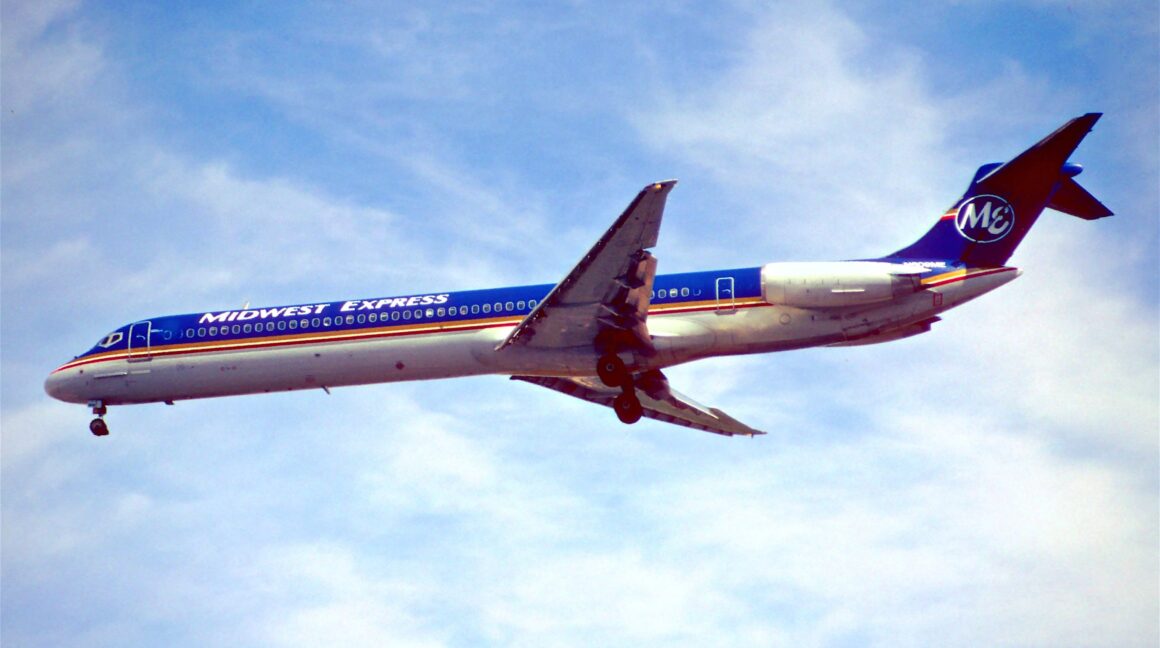
“Best Care in the Air”
Midwest Express’ gameplan was a lot different than the cattle haulers of the time (and of this present time to be honest). First, they sacrificed seating on their aircraft as a standard feature to provide shoulder- and legroom for passengers, going with 2×2 seating rather than the standard 3×2 configuration of DC-9s.
Also…the cookies. Midwest Express was famous for its chocolate chip cookies, made fresh in-flight. Sure, gourmet meals were a selling point, but fresh cookies were the clincher.
While its growth was relatively slow, Midwest Express was profitable and well-liked for its perks, and it is fair to say that the problems they tried to correct are the same grievances we still gripe about today: lousy food (or no food) and cramped quarters.
With their slow but steady approach, Midwest Express slowly expanded operations to include Omaha, Florida, and West Coast options with their fleet of MD-80 aircraft. They also renamed their airline from Midwest Express to just Midwest to avoid confusion as a feeder airline.
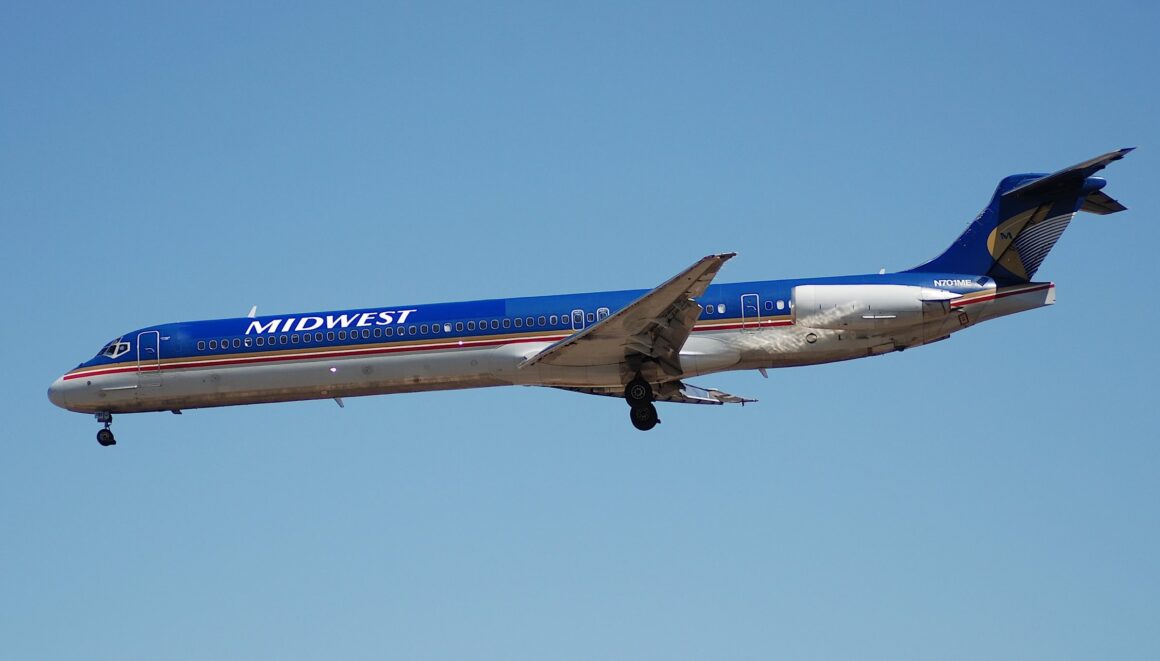
The Tragedy of Flight 105
Midwest Express Flight 105 crashed shortly after takeoff on 6 September 1985, en route to its final destination of Atlanta.
The jet, a DC-9-14 registered as N100ME, departed runway 19R at General Mitchell IAP in Milwaukee on a standard route to Atlanta. Almost immediately upon departure, at approximately 1,000’ AGL, Flight 105 contacted the tower to declare an emergency after losing power in the starboard engine. The jet impacted terrain within a few seconds of declaring an emergency.
The NTSB would later find that the engine failed due to stress cracking from corrosion. The mechanical issue was survivable, but the pilot failed to apply the control inputs required to keep the aircraft in the air. All 31 souls on board the aircraft perished when the jet descended into terrain.
Midwest Express had an excellent safety record, but aviation is an inherently risky business. Several noteworthy near misses involving Midwest Express aircraft occurred over the years. The most notable was Flight 7 over the Hudson River on the morning of 11 September 2001. While on approach to arrive at LaGuardia, Flight 7 was directed out of the way of United Flight 175, which eventually struck the south tower of the World Trade Center.
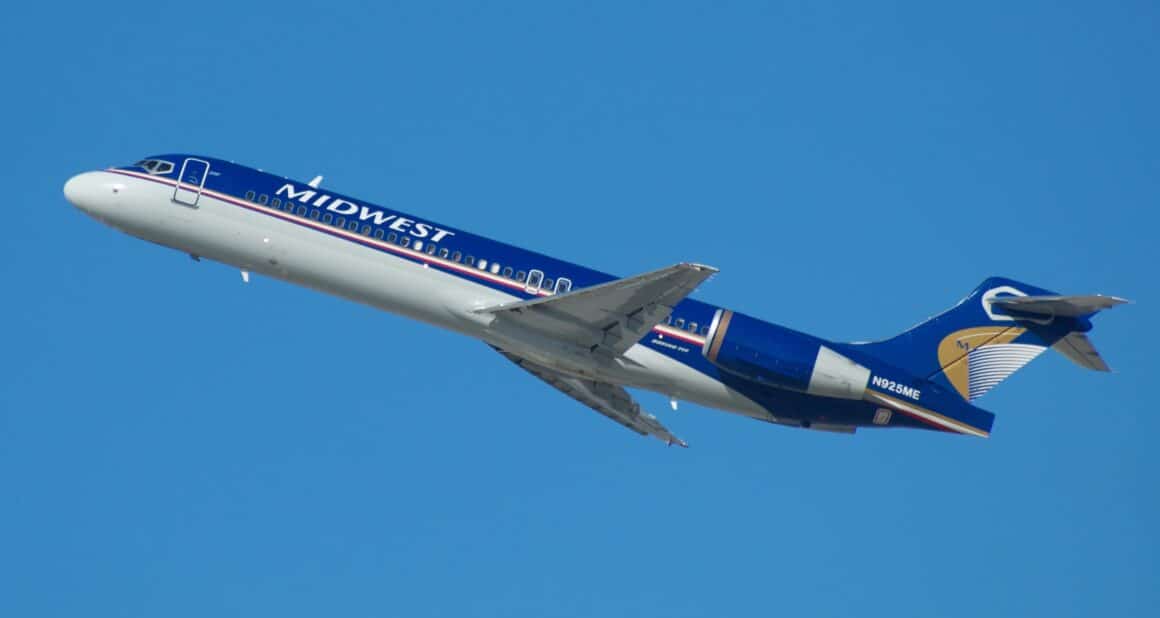
Life in a Post-9/11 World
All the airlines were hit hard after 9/11, and Midwest was not immune to these challenges. They fell on hard times financially after having been profitable for over a decade.
Their Omaha hub moved to Kansas City, jets that had been flying 2×2 seating arrangements were reconfigured to 2×3 cloth seats, and the gourmet meals that had been standard fare served on china were reduced to buy-on-board.
The End and A (Possible) New Beginning
Midwest did not collapse; rather they were watered down into oblivion. They were acquired by TPG Capital and Northwest Airlines in 2007. Over the next couple of years, they lost a significant part of their fleet to avoid bankruptcy.
In 2008, Midwest was approached by Republic Airways Holdings as an airline for purchase. The deal was brokered in 2009 with the plan to conduct flight operations using Republic Airways codes but the aircraft would retain their distinctive blue Midwest liveries.
Their final flight occurred on November 2, 2009, and the next day Midwest was no more. It was just more or less an unfortunate case of death by a thousand paper cuts. In a world turned upside down by terrorist attacks, Midwest just never seemed able to catch her stride again.
In 2017, rumors emerged that Midwest would be relaunched, and by the summer of 2019, an initial route structure and locations had been released. They were in partnership with Elite Airways, but those plans have ended, according to the latest update (9 March 2020) on the Midwest Express website.
